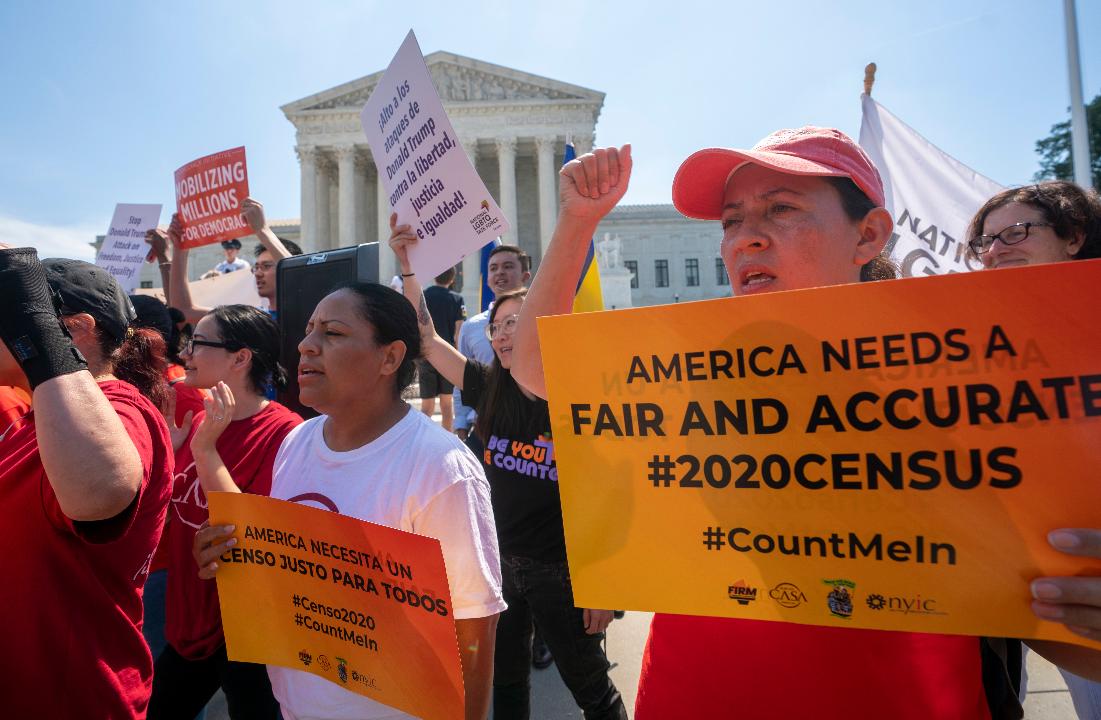Citizenship question throws wrench into 2020 census as Trump seeks delay
The Trump administration seemingly missed its self-imposed Monday deadline for printing forms for the 2020 census, on the heels of last week’s Supreme Court decision to block a question about citizenship on the country’s constitutionally mandated headcount.
As of Tuesday morning, the 2020 census documents had still not been approved by the Office of Management and Budget, according to a website that tracks the OMB’s activity. NPR first reported the news.
The census is slated to officially begin next January, with the first forms distributed to remote Alaskan communities. By law, the count must be completed by Dec. 31, 2020.
However, after the Supreme Court’s decision on Thursday, President Trump suggested in back-to-back tweets that he wanted to delay the census in order to include a “basic question of Citizenship.”
“I have asked the lawyers if they can delay the Census, no matter how long, until the United States Supreme Court is given additional information from which it can make a final and decisive decision on this very critical matter,” Trump said in the tweet.
It’s unclear whether Trump can legally delay the distribution of the census, or whether that would conflict with the constitutionally required deadline. The debate surrounding the census came to a head last Thursday, when the Supreme Court temporarily blocked the Trump administration’s attempts to include a question about citizenship in a 5-4 ruling. Chief Justice John Roberts sided with the left.
In the majority opinion authored by Roberts, the Supreme Court refuted the argument laid out by the Trump administration that a citizenship question needed to be added to the census in order to enforce the Voting Rights Act. It ordered the case to be reconsidered by a lower court.
"Unlike a typical case in which an agency may have both stated and unstated reasons for a decision, here the VRA enforcement rationale - the sole stated reason - seems to have been contrived," Roberts wrote.
The Trump administration initially wanted to ask respondents, “Are you a citizen of the United States?” in the questionnaire, which will eventually be used to draw a portrait of the country: How many people live here, how old are they, what is their race and ethnicity.
Critics, however, argued it would result in an undercount in immigrant communities because those groups may be worried about how their information will be used in the future. The question would not differ between legal and undocumented immigrants.
There’s also money at stake if the question were to be included (or the census significantly delayed).
The responses are used to determine how many seats in the U.S. House of Representatives each state has and how to allocate $880 billion a year in federal funding for schools, roads and other public services; therefore, adding new questions is often politically fraught. For instance, Politico estimated that California is already on the verge of losing one of its 53 seats in the House, a result of a shrinking population.
And while every state had a portion of foreign-born residents, more than half lived in just four states: California, New York, Texas and Florida. One-quarter of the total foreign-born population lived in California, where more than one in four residents was foreign-born.
The census usually includes every living person in the U.S., regardless of their citizenship or immigration status. The 2010 census estimated there were about 40 million foreign born people in the U.S., including naturalized citizens, lawful permanent residents, temporary migrants, refugees and undocumented migrants. That accounts for about 13 percent of the population, according to the census. The foreign-born population from Latin America was the largest region-of-birth group, totaling about 53 percent.




















